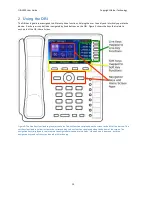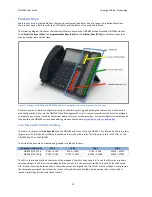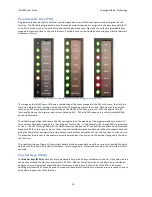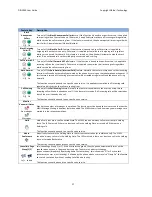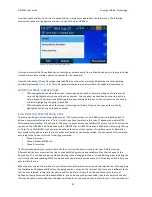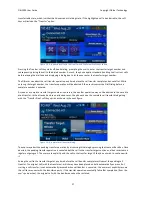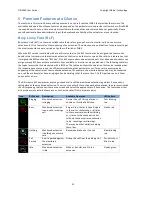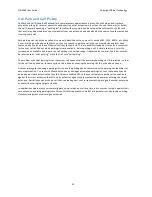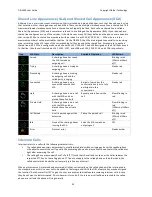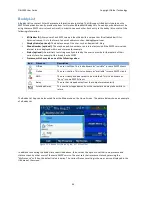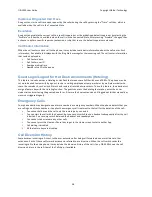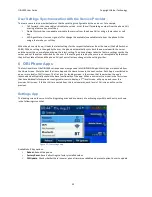
OBi1000 User Guide
Copyright Obihai Technology
24
key exists then the call will fail. For this reason it is important to ensure enough bound and unbound call keys are
defined to support your expected call volume and flow.
Numbers that are specified within a speed dial, entries of a directory listing or phone book contacts may contain
explicit information specifying which line to use when making calls to the programmed number. In this case, the
entry is bound to the specified line. When a phone number is called using a speed dial or contact entry, the phone
does not apply the
Digitmap
or
OutboundCallRoute
on the given number. It is important to note that the numbers in
the respective entries must be complete and valid without relying on any transformation by
Digitmap
processing.
If no explicit line information is given, usually with line field of the respective entries blanked out or set to auto, the
phone applies standard
Digitmap
and
OutboundCallRoute
processing on the given number to determine the line to
use for the call.
Receiving Calls
When a new incoming call arrives over one of the voice service accounts (lines), the phone finds an available call key
to assign the call to. If one is found, the call is admitted and the phone either rings or plays the call waiting
indication tone if the called party is already on a call. The call key that the incoming call has been assigned to blinks
quickly in red as a visual alert during the ringing state.
When the phone is ringing, the user may answer the call in one of the following ways:
•
Lifting the handset from the cradle to answer the call
•
Turning on the speakerphone to answer with the Speakerphone
•
Turning on the headset to answer with a connected headset
•
Pressing the Answer soft key
•
Pressing the call key that the incoming call is assigned to – this call key will flash to indicate it has been
assigned the call
In the latter two cases, the talking device will be chosen according to the following:
•
If the handset has been picked up, the handset will be chosen
•
Otherwise, the Speakerphone or Headset will be chosen according to the value of the
PreferredAudioDevice
parameter, which may be preconfigured by the phone administrator or changed by the user under
Settings/User Preferences on the GUI
When the phone is playing the call waiting tone, the user may answer the call in one of the following ways:
•
Pressing the Answer soft key
•
Pressing the call key that the incoming call is assigned to
In the case of call waiting, right before answering a call the phone automatically applies the following operation on
all other calls in the system based on their call state:
•
Connected Calls: hold them
•
Ringing or Held Calls: leave them alone
•
All Other Calls: end them
Ending Calls
You can end a call in any state. The simplest way to end a call is by hanging up, which is done in the following ways:
•
Put the handset on the cradle (on-‐hook), if the handset is being used
•
Turn off the Speakerphone, if Speakerphone is being used
•
Turn off the headset, if headset is being used
The hanging up action ends all calls in the following states: Dialtone, Dialing, Trying, Peer Ringing, Ended. Calls in
other states are unaffected. Hanging up does not require the calls app to be running. You may selectively end a call
from the calls app by highlighting the call and pressing the End soft key.

